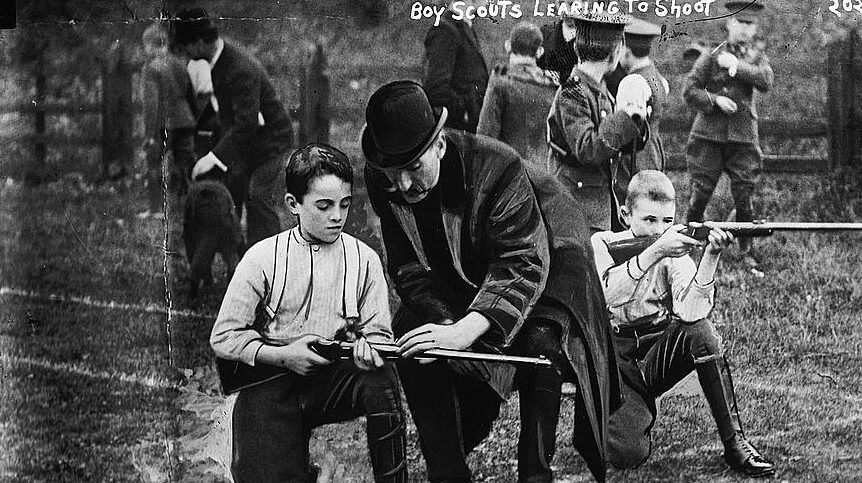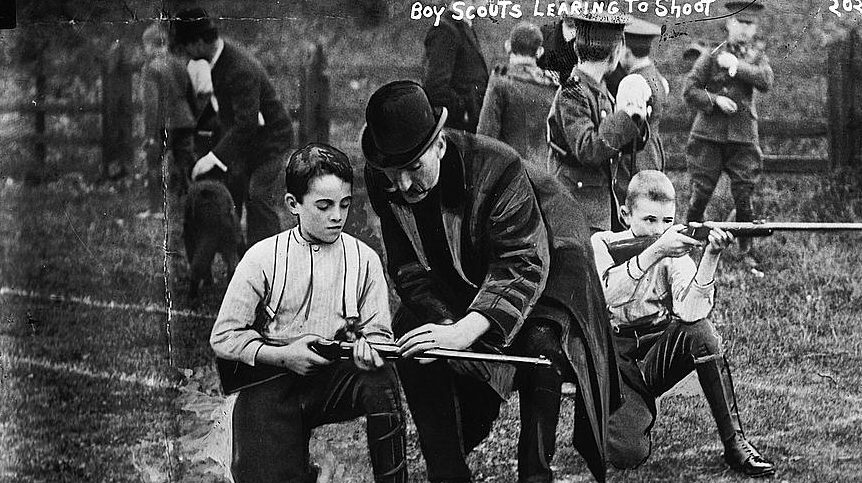An Old Boy Scout’s Journey – Part 4, by Rocket J. Squirrel


(Continued from Part 3. This installment concludes the article.)
Other PREPPING SUBJECTs
Fitness: I have managed to keep my body weight about the same as it was when I finished high school. I try to maintain my aerobic fitness. I have done a reasonably good job. The fitness routine includes running and I have commuted to work on my bicycle at various times over the years. Southern California roads were much friendlier to bicyclists compared to my new home. I need to be more consistent with my work-outs since I am not bicycling lately. Although my body weight is the same as when I was young, I am certain that my muscle mass has dropped. I need to get back to consistent strength training as well.
Vehicles: Our current vehicles are a 4-door sedan and an all-wheel-drive SUV. On my wish list is a Dodge 4X4 crew cab with a Cummins diesel engine. As Hank Williams Jr. sings, “I got a shotgun, a rifle and a 4-wheel drive, and a country boy can survive…” At this point, I just want to be a Country Boy. The diesel engine vehicle will give me fuel diversity.
We keep each vehicle stocked with various supplies: headlamp with extra batteries, first aid kit, fire extinguisher, Leatherman, assorted small tools, tire plug/repair kit, the larger cans of Fix-A-Flat, blanket, space blankets, cash, hats, bandanas, golf umbrellas, pocket-size copy of SAS Survival Guide, truck gun (unloaded, but with side saddles filled and a full grab-and-go), drinking water, rain jacket, DeLorme Atlas & Gazetteer of appropriate states, FAA Sectional Charts (the maps that pilots use) covering the same area, Mainstay and SOS food bars, leather gloves waterproofed with SnoSeal, a 12VDC-to-120VAC inverter. Tire chains and a shovel are added during the winter or when planning travel over mountain passes. I carry a manual bicycle pump on long journeys – slow but effective. I keep a trigger lock which I apply to the truck gun before dropping the vehicle for service and remove the lock after service. At other times, locking of the vehicle is the firearm security. The firearm is always stored out of sight.
Should abandoning our home become a reality the SUV is equipped with roof racks and Class 3 hitch receiver. There is a Yakima roof-top cargo box to mount on the roof racks for carrying supplies. The to-do list includes purchasing a basket-style hitch cargo carrier in which four GI fuel cans 20 liter would be carried. I did a little research and decided to purchase new fuel cans, not surplus. New is more expensive than surplus, but I did not want to end up with a leaky fuel can. I purchased the cans at www.jerrycan.com.
There is a fuel transfer hand pump (sort of like a small bicycle pump but specifically designed for gasoline and with suction/discharge hoses) with which I could remove gasoline from the sedan and place in the fuel cans to provide extended range for the SUV. The specific fuel transfer hand pump I purchased doesn’t seem to be available any more. Make certain that any pump you purchase for this purpose is rated specifically for gasoline. I see similar pumps currently available on Amazon from Cole-Parmer and Koehler Enterprises.
If you ever transfer gasoline, treat the process like you would at the gasoline station: turn your engine off, no smoking or other sources of ignition, and have someone standing at the ready with a fire extinguisher. The fuel tanks on each vehicle are kept half full or better when possible. Just as with water, the fuel pumps at gasoline stations will not operate without electricity. The fuel transfer hand pump could also be used to transfer gasoline from an underground gasoline station storage tank if the electricity is out. I need to get a longer length of suction hose to reach down into the underground tanks. I also have two spare 12V fuel pumps from a prior vehicle which could be used for the same purpose. I need to get those fuel pumps set up with a 12 Volt DC cigarette lighter plug and suction/discharge hoses.
Sanitation: We have a Thetford Porta Potti. But if we are staying put in a grid-down situation, we can use the regular toilets for urination. Everyone would use the same toilet and just flush with a bucket of water once per day. There are several empty 5-gallon buckets in the garage which could serve this and other purposes. On the to-do list is to determine what will happen to the sewer system in my neighborhood during a power outage.
I am accustomed to Southern California where the sewer system would gravity flow to the ocean during a power outage. I am behind a levee now and need to figure out what happens to my sewer system when the power goes out. Does the sewer back up into my home eventually? There are several large ponds near our house and a significant river 2 miles away so we could collect water on foot. Our bicycles could be rigged to transport the filled 7-gallon water containers (58 pounds) while walking the bikes. We used to have a Burley bicycle trailer which could have been used for that purpose but that is in use by the grandkids.
Communications: We have 4 “weatherproof” Motorola MT351R FRS/GMRS two-way radios. I found them at Costco for about $80 per pair. Purchased separately were hands-free headsets for each. I took Mr. Rawles recommendation and purchased a 5-pack of Baofeng transceivers. Even though it is not legal to sell them anymore, I saw some still for sale on Amazon when I last checked in January 2020. There are several Grundig Mini World 100 short wave radio receivers with reel antennae.
Barter: Stored for barter are cash (Federal Reserve notes/fiat paper currency,) pre-1965 silver US coins (real money,) nickels, ammunition, a couple of cases of Jack Daniels, electronic scales and a mechanical dial caliper for measuring barter items (along with a book of coin specifications from Jim’s book list), matches, duct tape, electrical tape, paraffin, bar soap, shampoo, castile liquid soap, rat traps, mouse traps, candy. (I think the candy would likely be kept for personal consumption!)
Conclusion
Now that I have taken time to think about it, my time in the Boy Scouts certainly gave me the mindset to “be prepared.” Looking back, the trigger that started the acceleration of my journey to being more prepared was Chuck Missler’s Strategic Perspectives. I say “more” prepared because we are certainly more prepared now than 30 years ago. But there will still be future additions and adjustments to what has been implemented previously. There is more training to be accomplished. My journey certainly accelerated 25 years ago. I hope that my story is an encouragement to you.
My list of preparations is given to hopefully get you started. You could use my choices…or not. I tried to be budget conscious yet I did select higher priced items when I thought the reliability and functionality were worth the extra expense. My choices may not the best choice for everyone, but they are what I have implemented. Each of us needs to evaluate our specific situation and location and implement what is appropriate.
Now I must answer the question posed in the title. “Why I am so old?” One movie I enjoy very much is Despicable Me. There is a line where Gru is exasperated with Doctor Nefario and asks him, “Why are you so…old?” I have appropriated that line and now often ask my beautiful bride and my good friends, “Why am I so old?” My body doesn’t work as well as it used to. My body aches more often. The use of my electronic devices inflicts repetitive stress injuries. Healing in general takes longer. I have become a grumpy old man as I think about the deterioration of the USA observed in my lifetime.
On one level, I am “so old” simply because I have not died yet. The truest answer is that God is not done with me here on this earth yet. So I will continue, endeavoring to honor God, proclaim His gospel, serve my family, serve God’s church and His chosen people – Israel, and serve my country until that time when God calls me home. May the LORD bless you, and keep you, and cause His face to shine upon you as you do His will.
